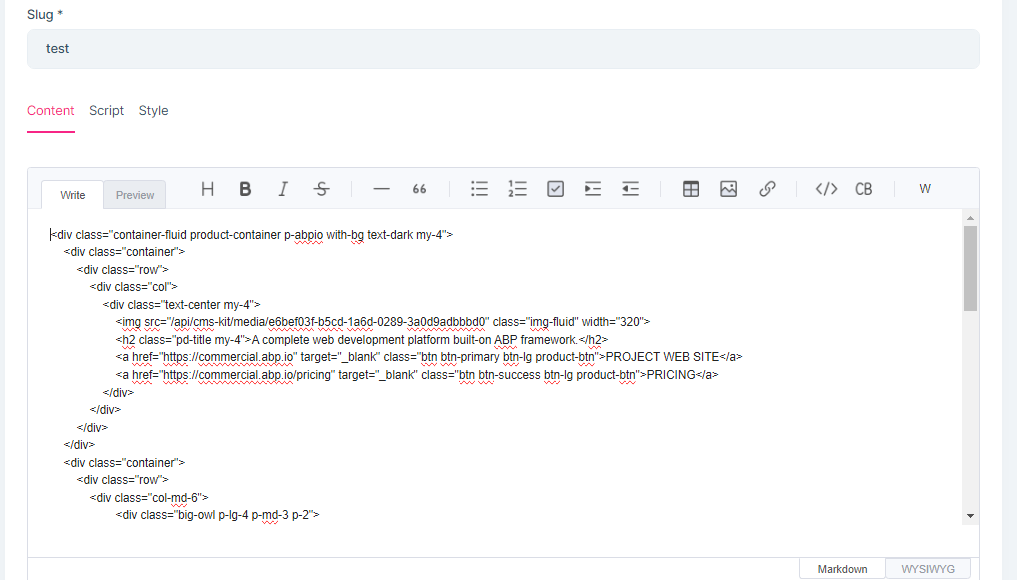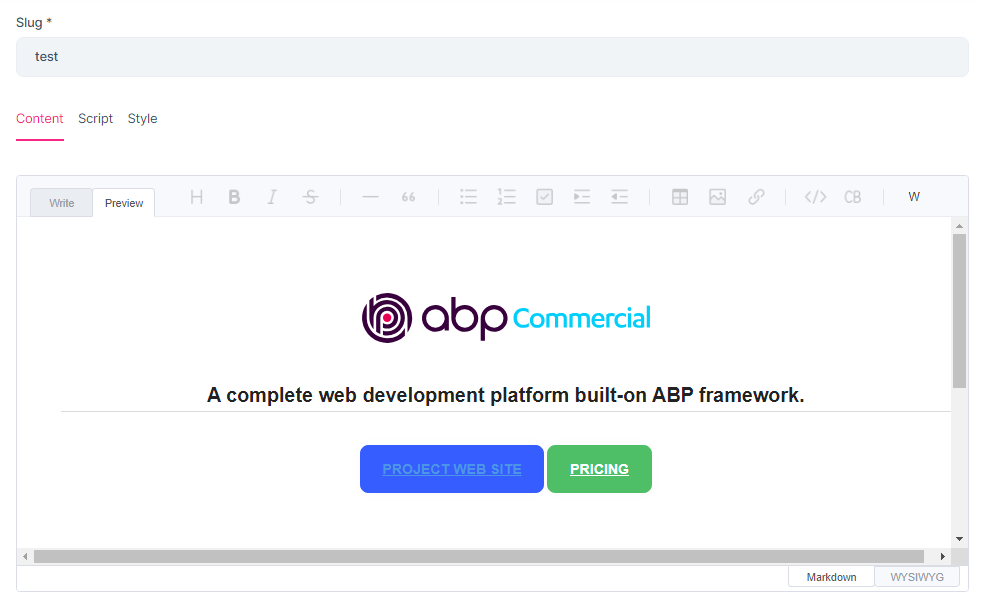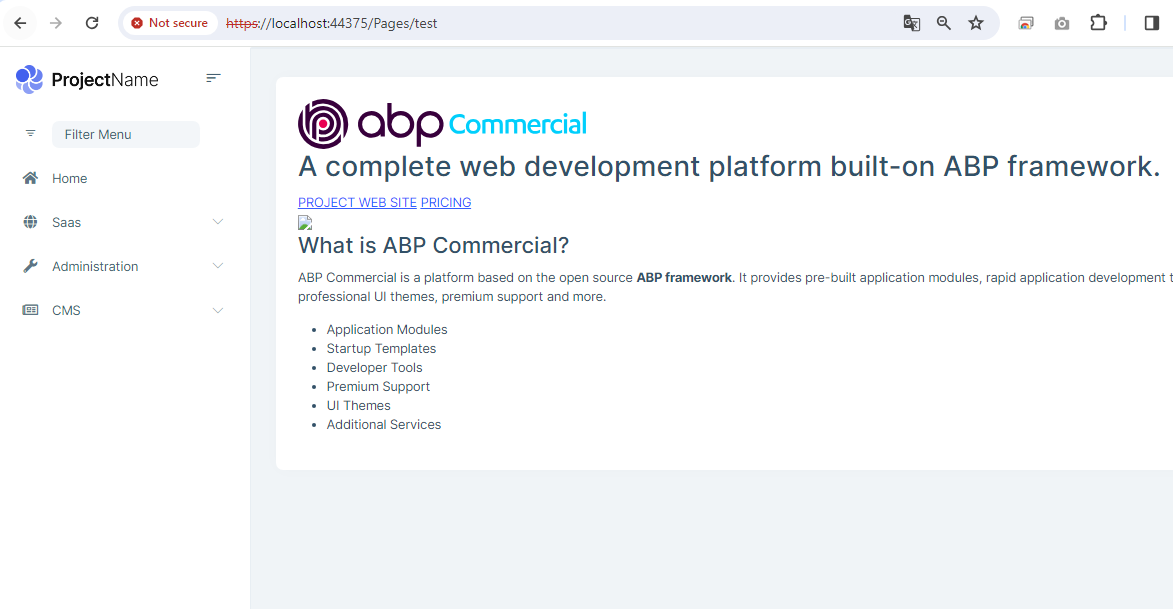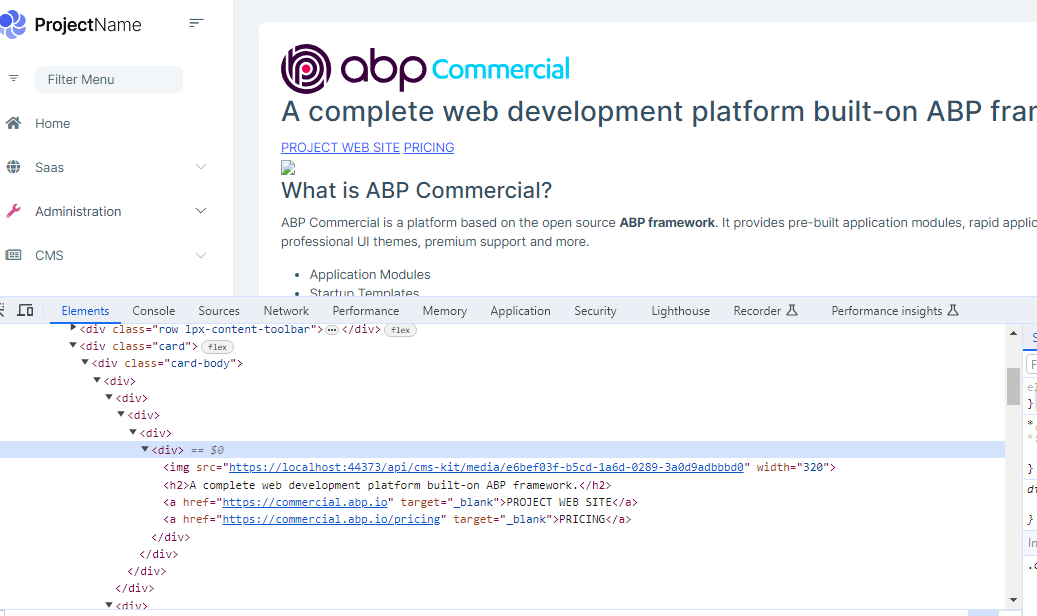Hi, if you want to create a custom component and add it to the settings page, you can follow https://docs.abp.io/en/abp/latest/Modules/Setting-Management#create-a-setting-view-component this documentation.
You need to define a view component and then, add it in your
*SettingPageContributorclass as described in the documentation.
Hi, How can I save and get those values? using ISettingManager ?
We need your support in creating a custom area for certain branch settings within Settings. Specifically, we need to add a custom tab labeled "Branch Settings" under the "Identity Management" tab as in the image attached, where we can add and store some values. Can you please assist us with this? It is very urgent.
This is fine but my Issue is, I can't delete Category from a particular Book. We are waiting for your reply because its very urgent.
Oh okay, sorry for the misunderstanding, I thought the problem was being not able to delete books. I'm able to reproduce the problem you stated now.
To quickly fix this problem for now, you can change the delete behavior in the dbcontext class. So, please open your DbContext class and make the following changes:
if (builder.IsHostDatabase()) { builder.Entity<Book>(b => { b.ToTable(DbTablePrefix + "Books", DbSchema); b.ConfigureByConvention(); b.Property(x => x.Name).HasColumnName(nameof(Book.Name)); b.HasMany(x => x.Categories).WithOne().HasForeignKey(x => x.BookId).IsRequired() - .OnDelete(DeleteBehavior.NoAction); + .OnDelete(DeleteBehavior.Cascade); }); builder.Entity<BookCategory>(b => { b.ToTable(DbTablePrefix + "BookCategory", DbSchema); b.ConfigureByConvention(); b.HasKey( x => new { x.BookId, x.CategoryId } ); b.HasOne<Book>().WithMany(x => x.Categories).HasForeignKey(x => x.BookId).IsRequired() - .OnDelete(DeleteBehavior.NoAction); + .OnDelete(DeleteBehavior.Cascade); b.HasOne<Category>().WithMany().HasForeignKey(x => x.CategoryId).IsRequired() - .OnDelete(DeleteBehavior.NoAction); + .OnDelete(DeleteBehavior.Cascade); b.HasIndex( x => new { x.BookId, x.CategoryId } ); }); }Just change the
.OnDelete(DeleteBehavior.NoAction)to.OnDelete(DeleteBehavior.Cascade), and then create a new migration and apply it to the database. Then, your problem should be fixed.Note: We have already made this change in the v8.1.0-rc.1+, so you can also consider updating your application.
Best regards.
Yes, its working now Thank you for your Support.
We are encountering an issue with a project(Single Layer) created using ABP Suite (8.0.4), specifically with tables that have a many-to-many relationship, such as the Book and Category entities. The Book entity is associated with multiple categories. While we are able to create a book with categories successfully, we are unable to delete it. We are receiving an error message stating, "The property 'Books.BooksId' is part of a key and cannot be modified or marked as modified. To change the principal of an existing entity with an identifying foreign key, first delete the dependent, invoke 'SaveChanges', and then associate the dependent with the new principal." Interestingly, the same code worked in a previous version of the project(Single Layer) using ABP Suite 6.0.2.
Hi ,
I am able to implement cmskit in single layer application by following steps provided by you.
I have tried at my end but in my case css is applied to newly created page just like.I am not getting exactly what is the issue at your end.
Hi, Is the style class with cms page is compatible with the ABP Suite version 6.0.2?
Hi ,
I am able to implement cmskit in single layer application by following steps provided by you.
I have tried at my end but in my case css is applied to newly created page just like.I am not getting exactly what is the issue at your end.
Hi,
I can create a single-layer application in the same way (We are using abp suite version 6.0.2). However, the issue arises when the style class is not applied to the newly created CMS page. I am also getting the same as you've shown in the images (in preview mode only). But, when I try to access it via the URL /pages/{slug}, the style and ID are not applied.

 This is the result - without style class and ids
This is the result - without style class and ids


Hello,
Yes, Redis cache is required for using CMS kit.
You may check here https://docs.abp.io/en/abp/latest/Modules/Cms-Kit/Index#pre-requirements.thanks
Hi,
Could you please provide a solution for the issue related to style classes? This is an urgent requirement for us, and the previous solution lacked sufficient details.
Hi Anjali,
We are waiting for the solution from you. Kindly, send response immediately.
Hello,
Yes, Redis cache is required for using CMS kit.
You may check here https://docs.abp.io/en/abp/latest/Modules/Cms-Kit/Index#pre-requirements.thanks
Hi,
Could you please provide a solution for the issue related to style classes? This is an urgent requirement for us, and the previous solution lacked sufficient details.
Hi,
2.The CMS page contents aren't acquiring the style classes we have specified. However, they seem to work fine in some demo applications that accept CSS classes on content pages. 3.Is it necessary for our Single Layer solution to use Redis Cache? Because it appears that the ABP suite CMS kit Pro can only be added after selecting a public website.
Can you please provide solutions for these questions?

